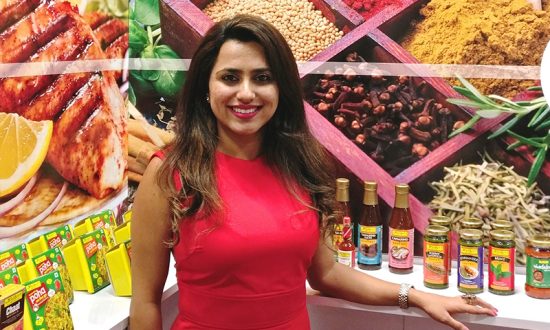Sanjana Desai is the 4th generation who was groomed under the guidance of her father Mr. Sanjay Desai (owners of over 100-year – Desai Brothers Ltd. (DBL). She is involved with the Food Division of DBL – and more specifically the brand – Mother’s Recipe. Sanjana who is a graduate from Bryant University (USA) with a degree in Finance, Economics & International Business, took her first assignment as an intern at Desai Brother’s Finance department. She was given the responsibility to analyze countless annual reports and presenting a case for investments to the company CFO.
Covid-19 pandemic has profoundly restructured the retail landscape. Its impact on consumers has dramatically changed buying behavior. While certain consumer trends have been accelerated, some consumption behaviors have been altered.
The FMCG sector in India is currently the country’s fourth-largest sector. The sector is expected to witness significant growth in both rural and urban consumption. Growing brand awareness, easier access, and changing lifestyles have been the key growth drivers for the sector. The urban segment (which accounts for a revenue share of around 55%) is the largest contributor to the overall revenue generated by the FMCG sector in India. However, in the last few years, the FMCG market has grown at a faster pace in rural India compared to urban India. Semi-urban and rural segments are growing at a rapid pace and FMCG products account for 50% of the total rural spending.
The expansion has been fueled by an increase in average income, an increase in middle-income groups’ disposable income, increased urbanization, and a shift in consumer preferences for hygienic products. There is also the trend of more women in the workforce, an increase in double-income households which increase the demand of food products as an aid to cooking where there is a lack of time as well as lack of skill.
As per Nielsen estimates FMCG Industry Growth Forecast – E-commerce for FMCG will reach US$ 400 billion by 2022, which will represent between 10-12 percent of the global market for such products. The Indian processed food market is projected to expand to US$ 470 billion by 2025, up from US$ 263 billion in 2019-20.
Here are a few developments that are currently governing the FMCG sector:
The surge in purchasing-commerce:
During the pandemic, the consumer felt safer ordering online. As the industry emerges from the pandemic there is unprecedented growth in purchasing products online This has created a dramatic increase in consumer demand online. The internet commerce business has witnessed tremendous growth attributed to the cutting-edge technology and has attracted new users from urban areas and semi-urban areas too. Ecommerce platforms continue to provide accessibility, a variety of options, discounts and consumer ease. The consumer products demand in eCommerce has tempted brands to set up a direct sales channel on multiple digital marketplaces and stand-alone websites and stores. Almost every FMCG brand has partnered with big e-commerce websites like Flipkart, Grofers, Bigbasket, and others.
This has also resulted in a rise in demand for instant meals; Ready to Cook (RTC) and Ready to Eat (RTE) are also influencing current consumer preferences.
Post the COVID-19 crisis, digitization has been an emerging FMCG trend in India which has shaped the future of retailing consumer goods.
Growing demand for new healthier options:
There is increasing awareness amongst people regarding their wellbeing. The rising incidences of ailments have triggered consumers to bring about important changes in their diet and lifestyle, making them more health-conscious than ever.
People are becoming more watchful of what they buy and what goes into their bodies. Organic, superfood-based, nutritious, natural products, products without preservatives are going to be a hit amongst the masses, no matter what the category. There is a clear need for embracing healthy ingredients in the product DNA, for FMCG companies.
The rise in ready to cook (RTC) and ready to eat (RTE) segments:
Ready to cook (RTC) and Ready to eat (RTE) food segment has witnessed a surge in demand in the last couple of years. The segment is driven by the increase in the accessibility offered, in terms of effectiveness, and the little effort and skill required for the preparation. The preference for these meals by the working population and millennials has grown because of the easy cooking method. Other factors that have driven the growth of this segment are rising income levels, preference for healthy products, and increasing urbanization.
The overall outlook for the FMCG sector seems positive even though challenges remain in the near term. FMCG players will have to create a niche in their segments and position their business model, strategy, marketing, stores, and operations to succeed in a post-pandemic world. Leaders in FMCG and the retail space will be distinguished by their agility to adopt new technology, creativity, and smart technology investment.


